February 1, 2018
Winter Savory, Weaving Design, Compost Magic
After its untimely upheaval December 26, my rather grumpy Yucca rupicola x pallida’s back in the ground after the big drainage pipe project under the house.
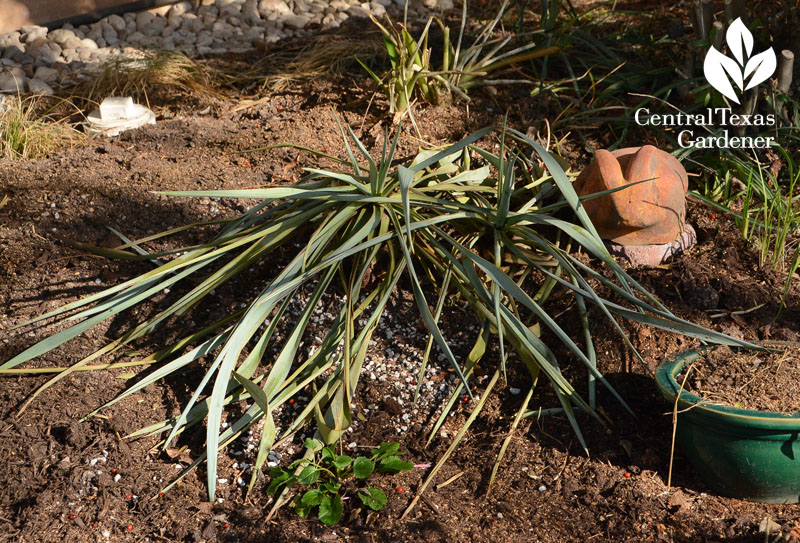
That bed by the front door was a big, deep hole for 3 weeks. Temptation to scurry down and explore under the house was quickly quelled by the expert house “cavers.”
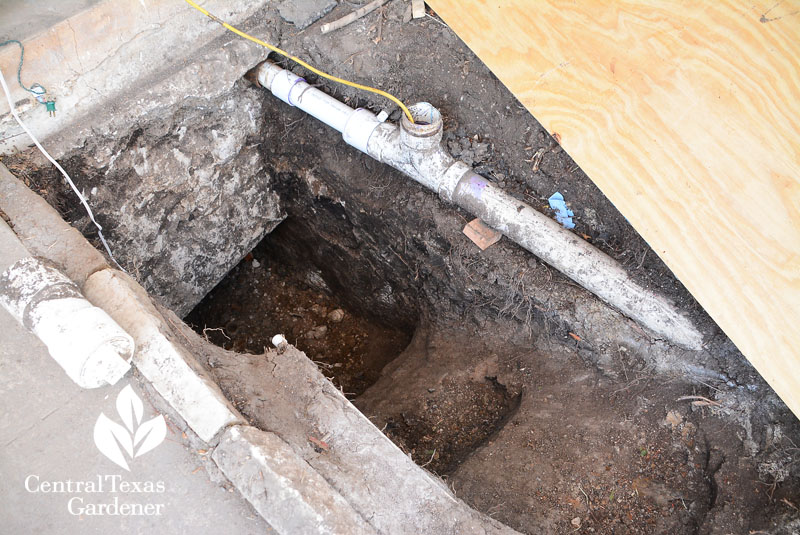
The mountain of excavated fill dirt only revealed brick-like clods, though. No wondrous archeological finds here.
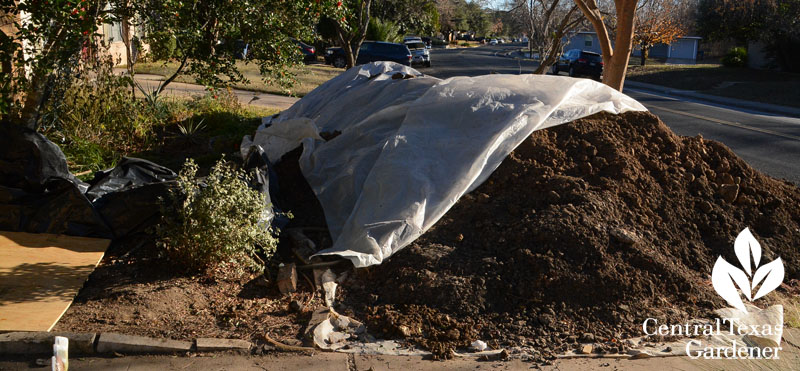
Thankfully, these sensitive, efficient tunneling guys set the first few feet of well-composted top soil to the side for me to shovel back once they were done. The bed is pretty barren, since many plants are still sheltering in protected pots until warmer weather (that green container is sort of marking the location for one of them).
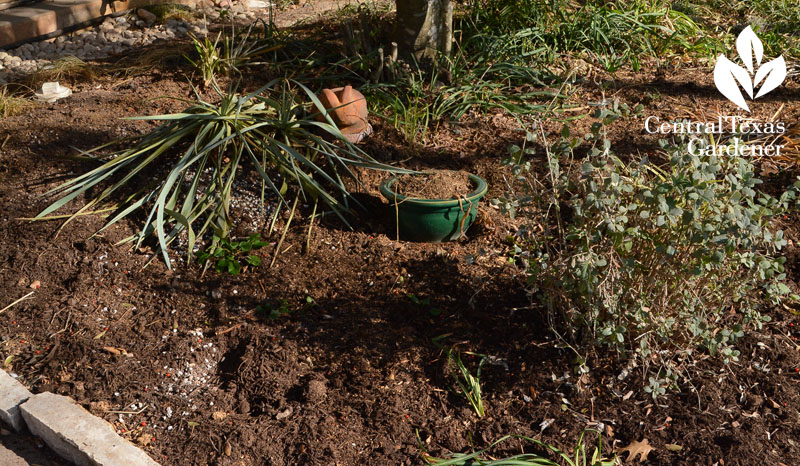
Until I return them and pop in new additions, Greg hauled 6 wheelbarrows of our compost to leach in if errant rain ever gives us a hand. Note: I scooted the compost away from the yucca’s hole.
Since compost is the ultimate nutrition for soil, and thus, plants, Trisha takes the mystery out of making your own.
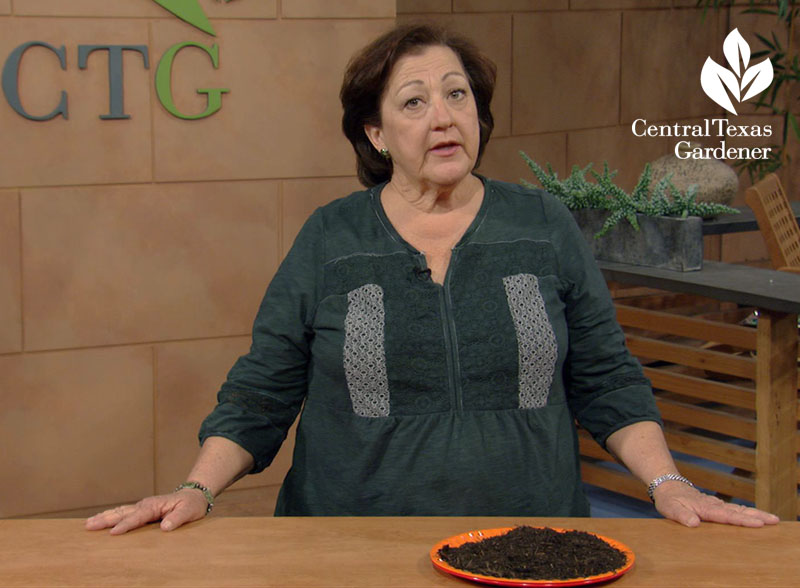
There are countless ways to corral your compost ingredients, from casual piles (my way) or contained. Ten Acre Organics built multiple bins out of recycled pallets in their home (sub)urban farm. Once a bin is “simmering,” they start a new batch in another bin.
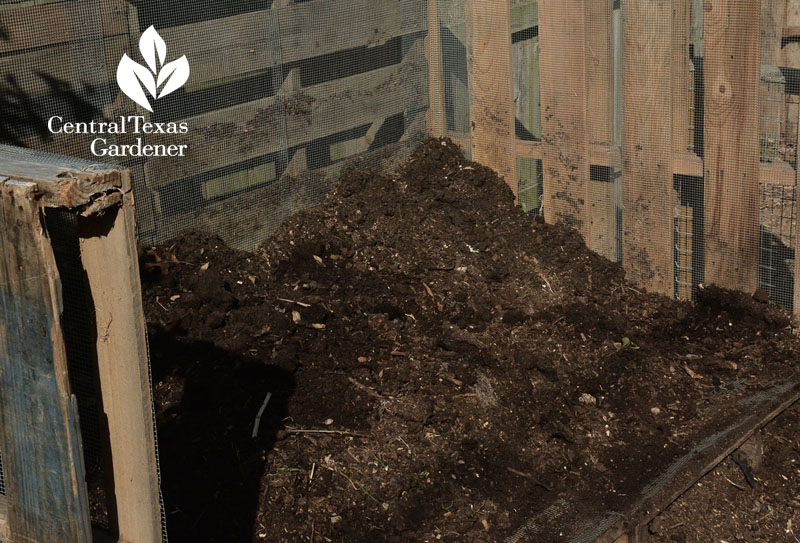
Pflugerville gardener Paul Lofton inserts a drilled PVC pipe into his wire bins for aeration and to moisten via the water hose.
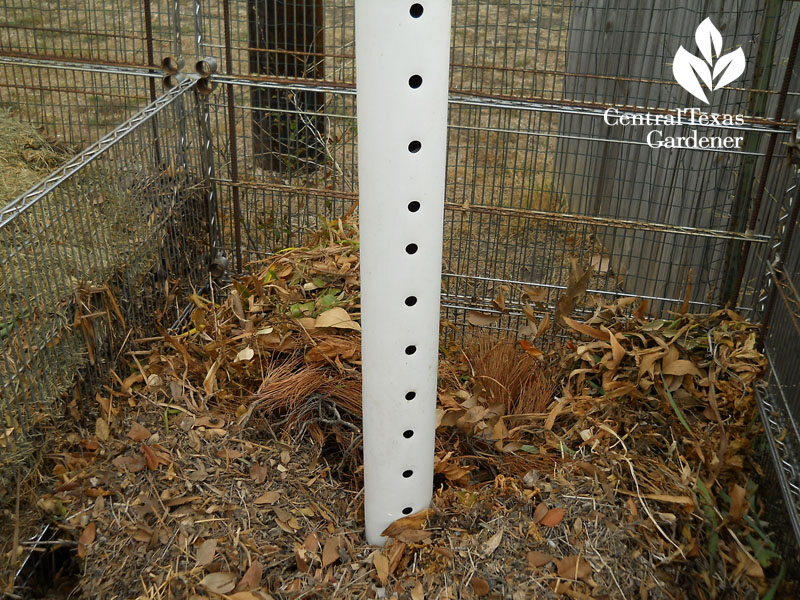
Rolled wire fencing can be shaped to any size and to cover, too.
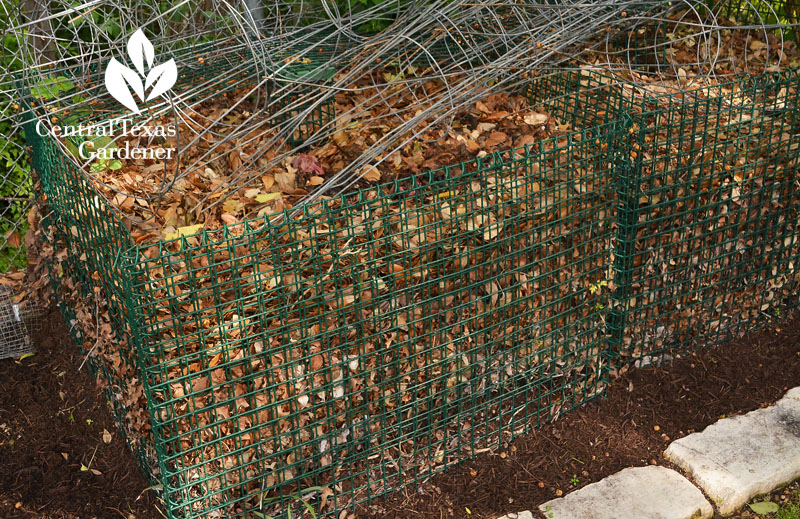
Keyhole gardens utilize a central wire tube that tunnels garden and kitchen scraps (not meat or dairy) into a feeding machine as they break down.
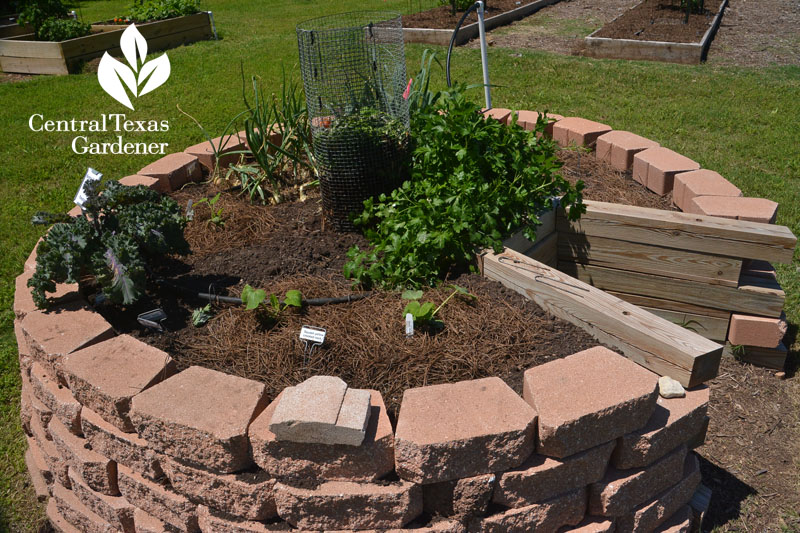
Tumblers are popular, especially in small gardens.
Tim and Sheila Smith in Waco use big trash barrels drilled with holes for air and rainfall.
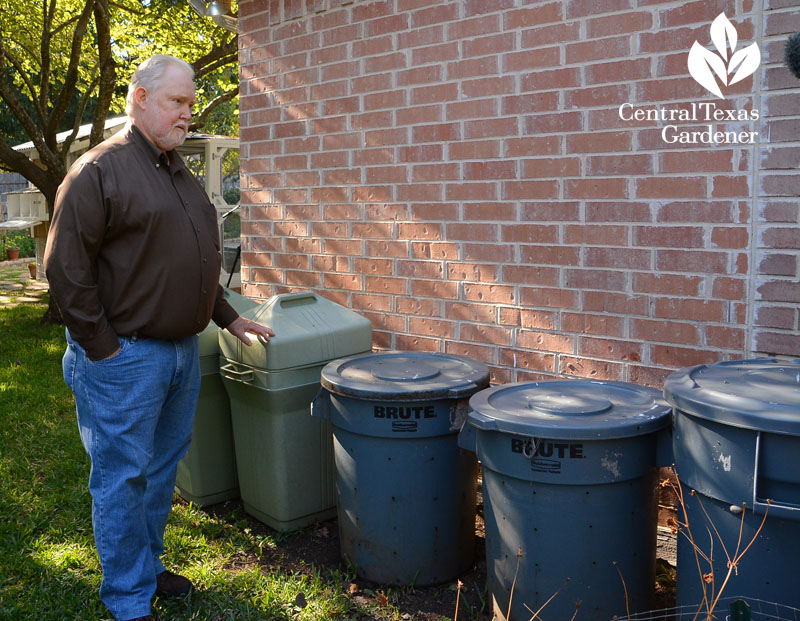
Compost is the best thing you can do for your trees. Spread now or anytime, but avoid covering the base of the trunk. But what’s going on with Gail Allen’s redbud tree at Natural Bridge Caverns that’s splitting at the crotch?
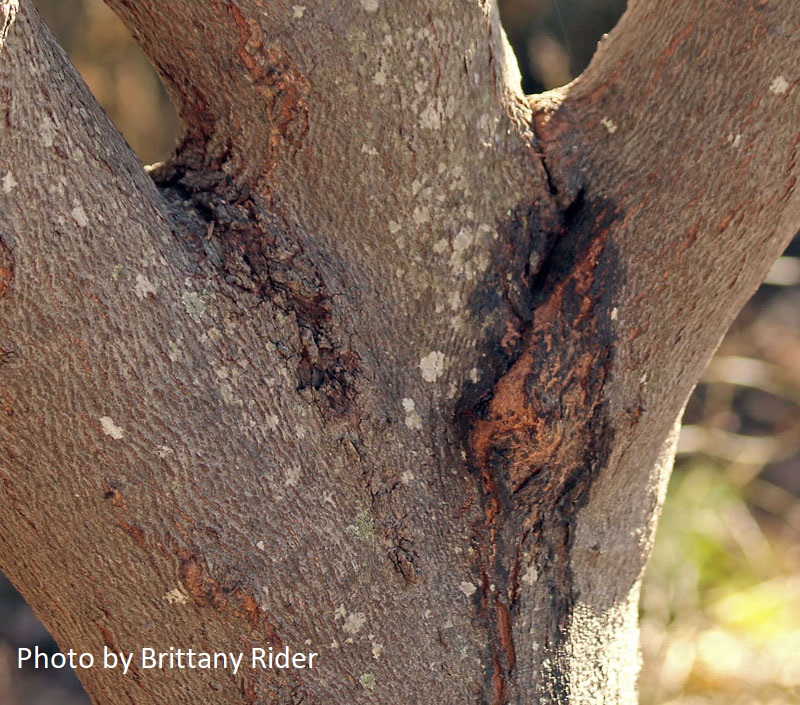
The culprit is our dramatic weather patterns: heavy rainfall followed by equally intense drought. Lots of rain spurred overly eager growth, leading to heavy branches that can stretch limbs apart, “exposing interior plant sap, which would oxidize, or might attract opportunistic microbes, such as sooty mold, either of which would cause the black ridges seen here,” Daphne says. Find out more and why providing deep irrigation during drought can help.
Now, let’s get to planting! Are you looking for an easy-care, evergreen herb to edge a border to trim spicy culinary taste? Energetic and absolutely fun Herb ‘n Cowgirl Ann McCormick packs a peppery punch with perennial winter savory.
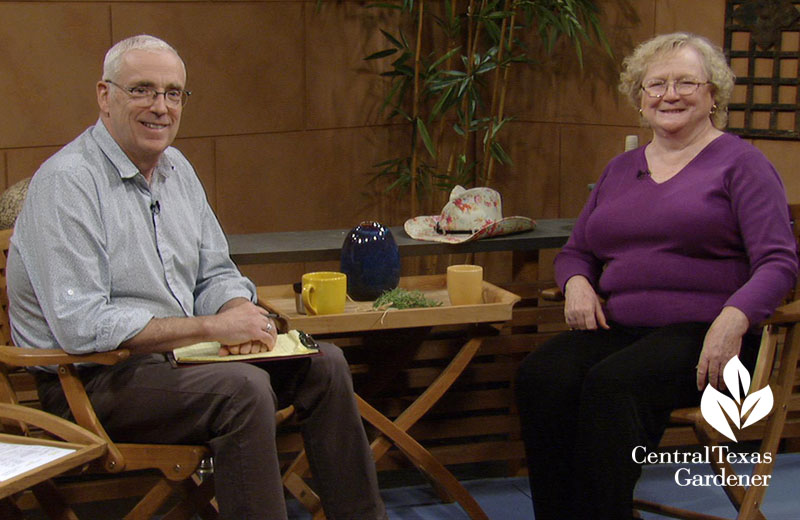
Combining the flavor of oregano and thyme, winter savory isn’t as finicky as thyme. Growing about a foot or so high and wide, this perennial even handled Ann’s lengthy days of temps in the 20s. Find out how to grow this winner!
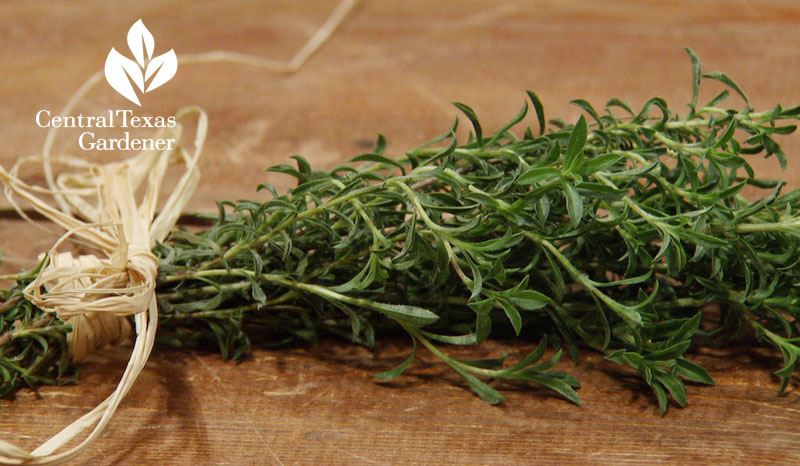
Watch CTG’s other interviews with Ann: growing cilantro. And true herbal tall tales.
And check out hot-off-the-press blog Southwest Gardening where Ann joins 3 other notable Southwestern gardeners/writers/designers with personable, informative blogs of their own: Noelle Johnson, Jacqueline Soule, and Teresa Odle.
For more herbal tasty designs, get Trisha’s favorite rosemary and oregano varieties and why she fell for winter savory.
On tour in San Marcos, Lydia Kendrick weaves together a garden on many levels.
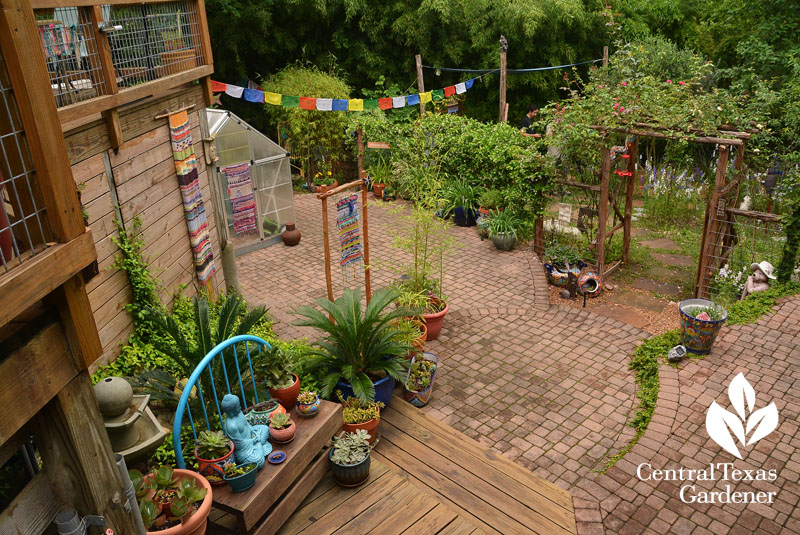
A practical goal was to deflect rainwater in her sloping yard and also to collect it. She only hits the hose in super dry times.
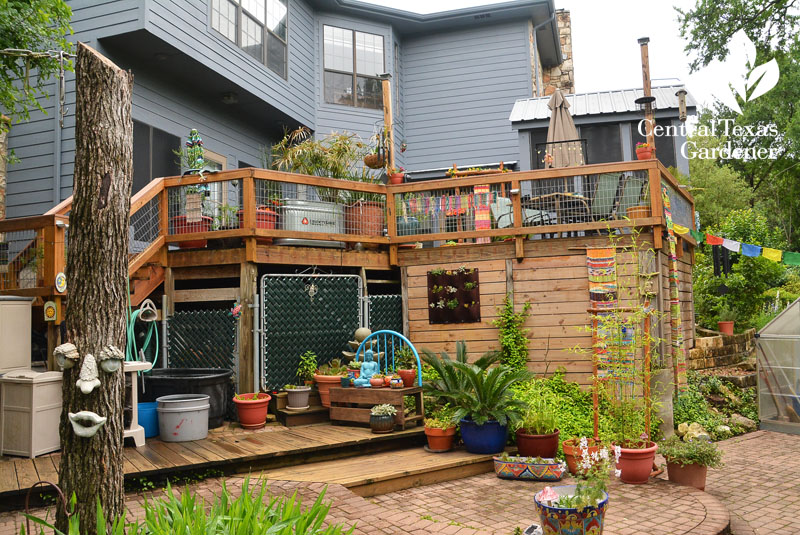
Lydia’s artistic mission led her to singling out destinations, each with a particular mood.
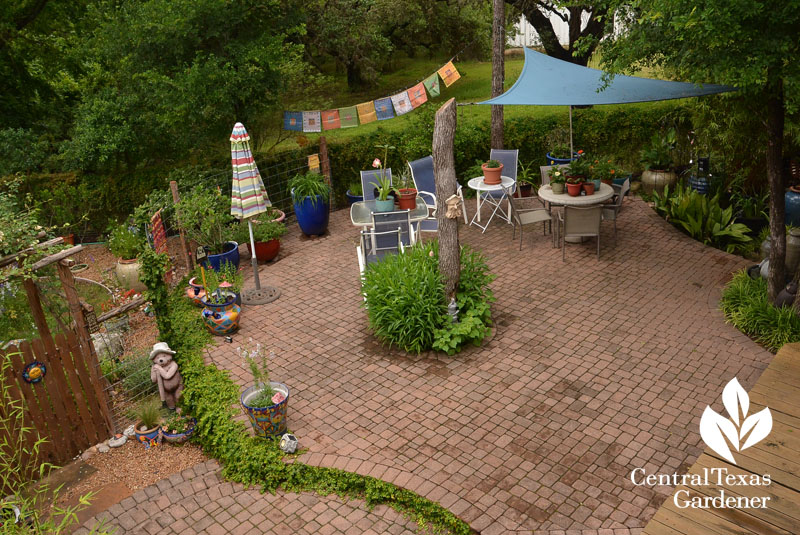
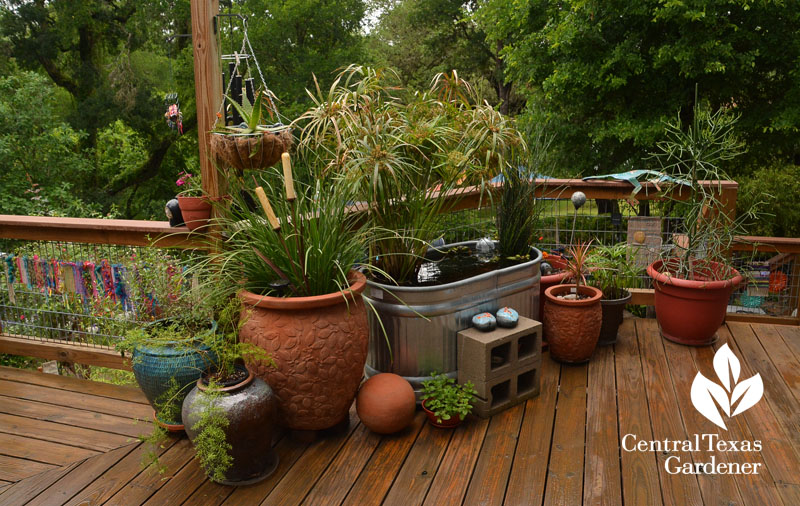
She unites them all through her intricately woven hangings.
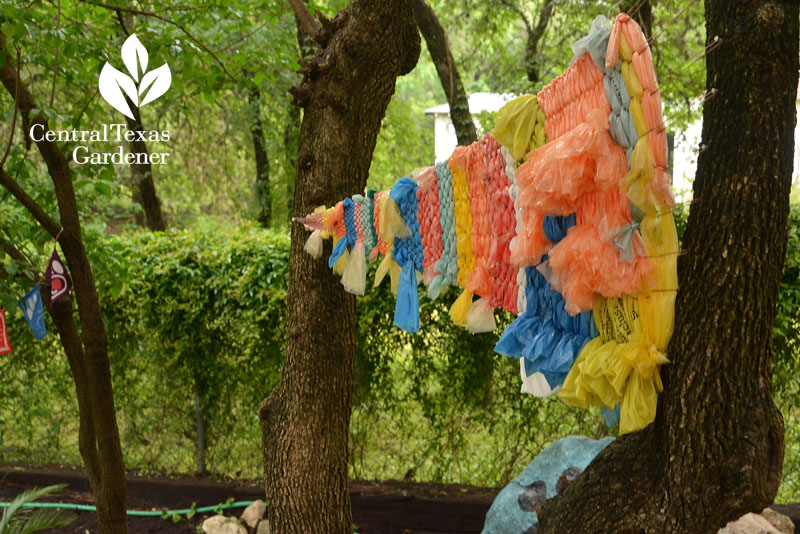
A few years ago, Lydia found a new passion as a fiber artist after taking a weaving class (my dream!). On looms indoors, she designs absolutely gorgeous scarfs, runners, wall hangings, and placemats—well, just about anything that can be woven!
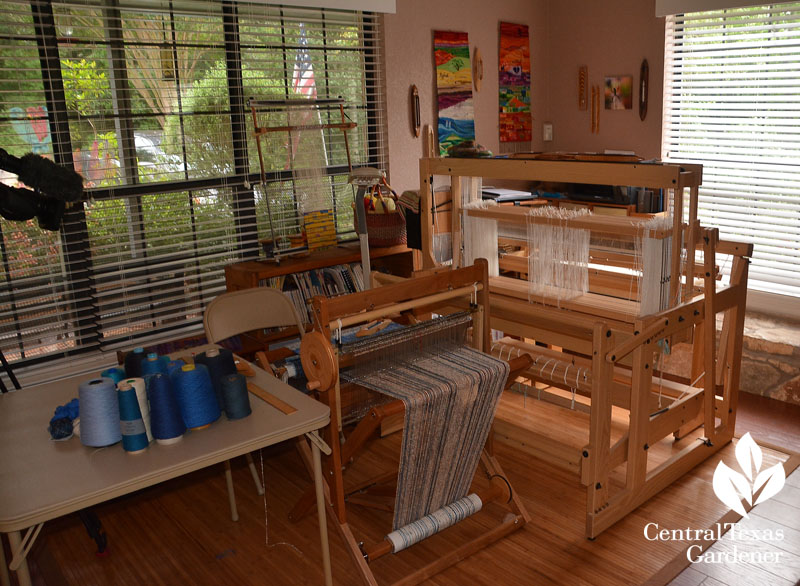
She took her leftover yarn outdoors to pattern frames of all kinds, even from recycled finds.
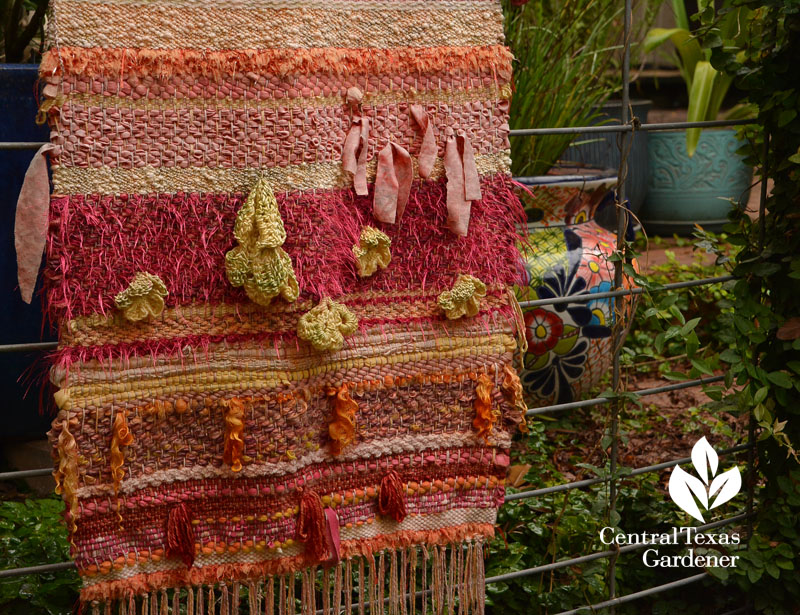
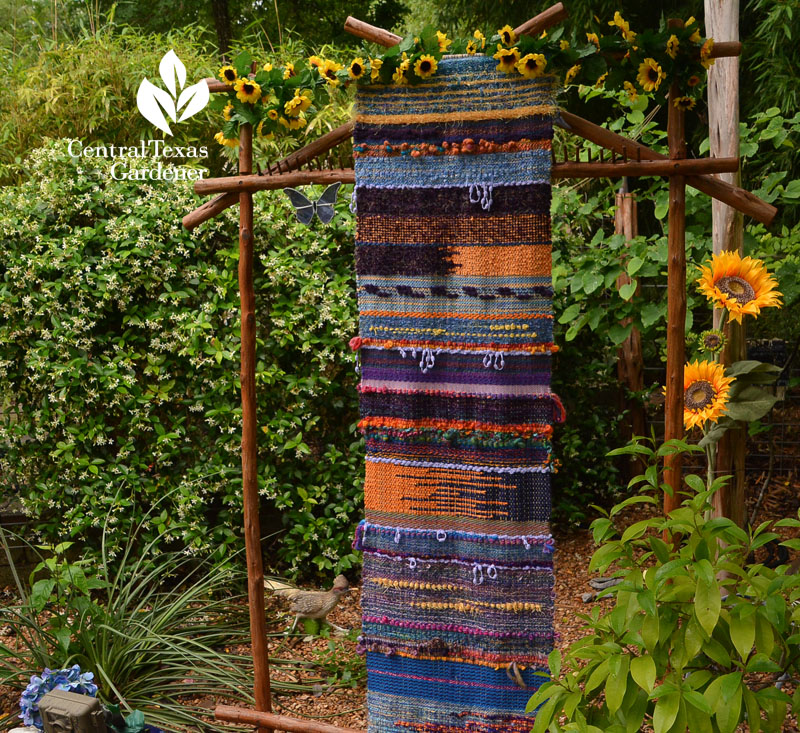
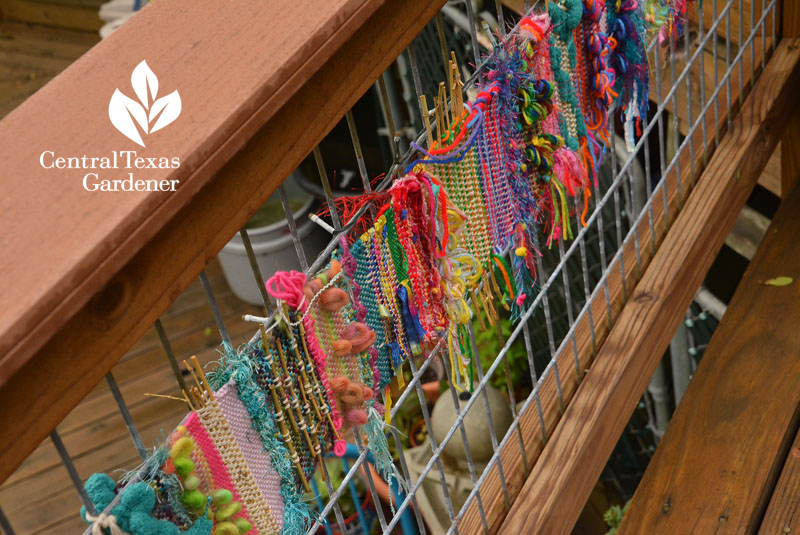
Her birds have the fanciest nests in town since she stuffs a suet feeder with yarn of their own.
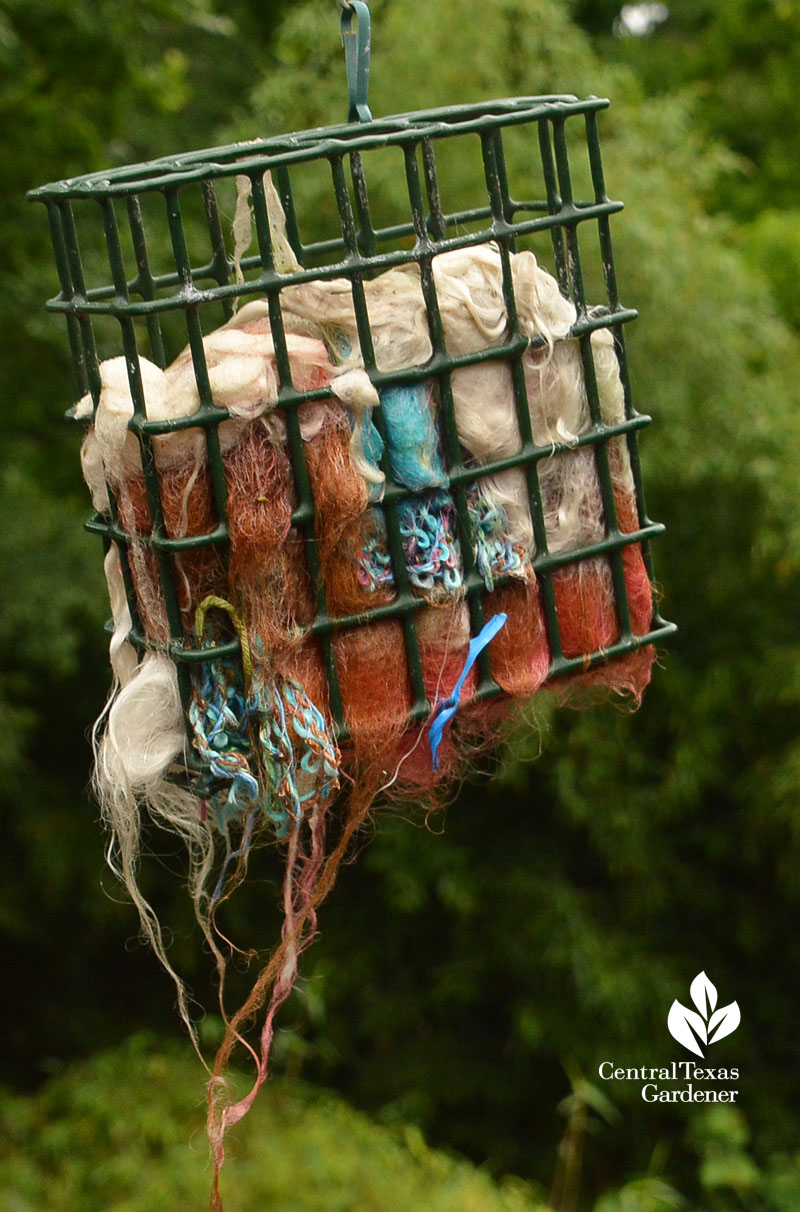
Then she discovered how to put all those colorful plastic newspaper sleeves to work! Looks real, doesn’t it?
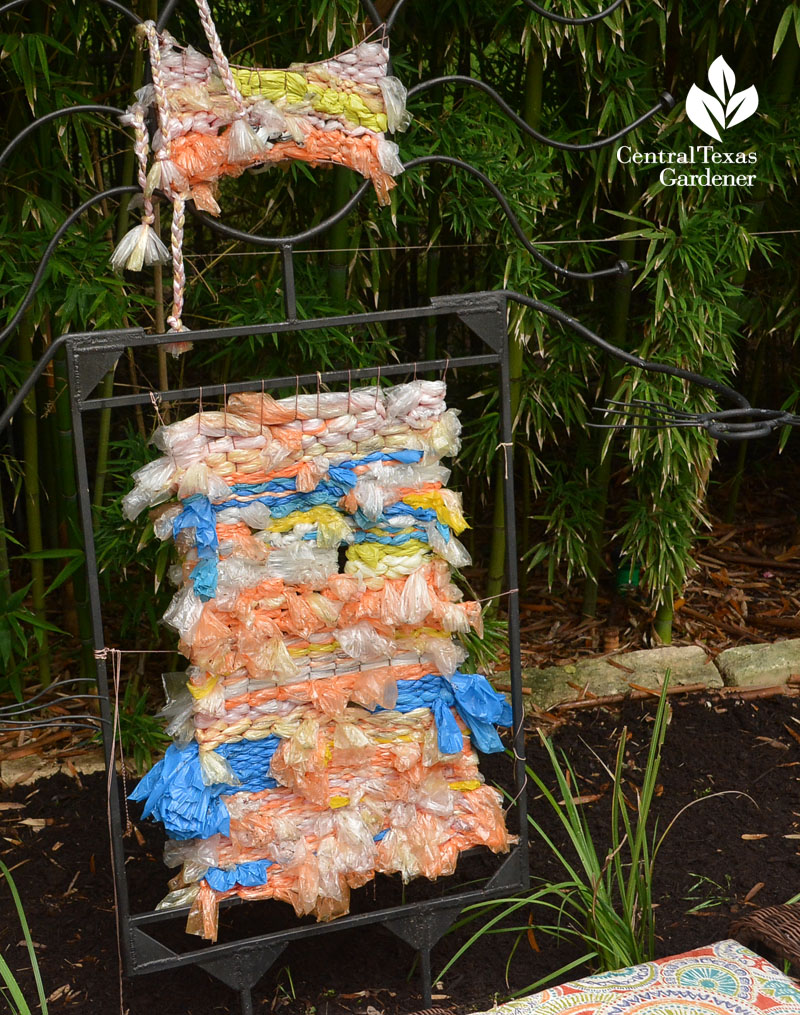
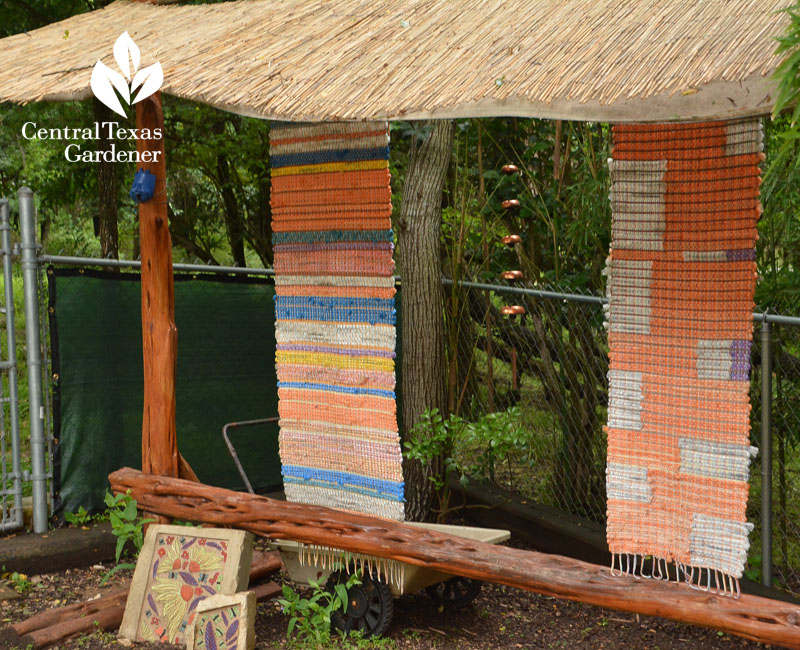
Watch the whole story now!
And thanks for stopping by! See you next week, Linda

